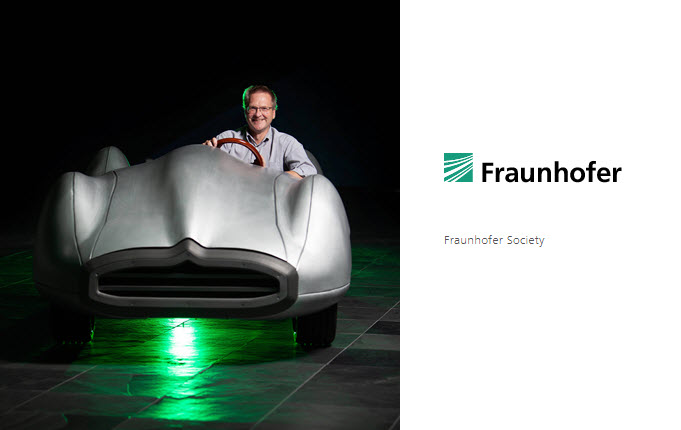
IC and diesel engines that run on fossil fuels are now being phased out. New drive options for cars, trains, ships and airplanes are urgently needed. Is the age of hydrogen beginning now?

© Roger Hagmann Sören Scheffler from Fraunhofer IWU in his Silberhummel®: The car is based on concept drawings for a racing car that was never realized. It is equipped with fuel cell technology.
The future of mobility is also sporty. This is shown by the HYRAZE League: A completely new motorsport competition is to start under this name from 2023. The races will be held with 800 HP hydrogen racing vehicles. These have almost no emissions but accelerate from zero to a hundred kilometers per hour in less than three seconds.
Fraunhofer is working on bringing the historical into the future. In the Silberhummel® project , the Fraunhofer Institute for Machine Tools and Forming Technology IWU is concerned Above all, it is about bringing two branches of technology together: the technology of developing one-piece cars – i.e. prototypes – inexpensively, and fuel cell technology on the other. Silberhummel is based on concept drawings of a never-produced racing car from the automobile manufacturer Auto Union AG from 1940. The Fraunhofer IWU reconstructed the vehicle, manufactured the external parts of the model, and, in a further step, provided the car with a fuel cell drive. “Our Silberhummel® should always be kept up to date with the latest fuel cell technology,” says Sören Scheffler from Fraunhofer IWU. “We will therefore gradually exchange the components and replace them with optimized variants.”
But hydrogen can do more. Hydrogen has to be able to do more. Hydrogen is a question of fate in order to achieve the climate goals. This is shown by the Federal Government’s National Hydrogen Strategy: an action plan with 38 measures that is intended to advance the generation, transport, use and further use of hydrogen – and thus defines the steps necessary to achieve the climate targets. Among other things, 1.5 to 2 gigawatts of electrolysis capacity for green hydrogen are to be achieved by 2023, and the share of renewable energies in transport will be 20 percent by 2030. In short: Technologies related to green hydrogen are of the utmost importance for the future viability of Germany as an industrial location. The Federal Government is supported in this by the National Hydrogen Council, to whom Dr. Karsten Pinkwart from the Fraunhofer Institute for Chemical Technology ICT and Dr. Sylvia Schattauer from the Fraunhofer Institute for Microstructure of Materials and Systems IMWS.
Prof. Dr. Christopher Hebling
Spokesman for the Fraunhofer Hydrogen Network
Fraunhofer Institute for Solar Energy Systems ISE
Heidenhofstr. 2
79110 Freiburg
Phone +49 761 4588-5195
Prof. Dr. Mario Ragwitz
Spokesman for the Fraunhofer Hydrogen Network
Fraunhofer Institute for Energy Infrastructures and Geothermal Energy IEG
Am Turm 14
03046 Cottbus
Phone +49 721 6809-157
Source: Fraunhofer
Read the most up to date Fuel Cell and Hydrogen Industry news at FuelCellsWorks




